In November 2016, I gave a talk to the brand new Dalhousie University Chapter of the Association of Women Geoscientists. When I asked the women what they were looking for in a talk, they weren’t very specific other than that they wanted to hear about my career as a woman in earth science. I decided to keep it light-hearted but pertinent.
The feedback was positive and there was even interest from further away (thanks to a Twitter announcement of my talk), so I decided that this was the opportunity for a blog post reflecting on “My Brilliant Career” (this title inspired by one of my favourite movies). Warning: there are Lessons for Women in here!
=====
1. Why Geology / Earth Science?
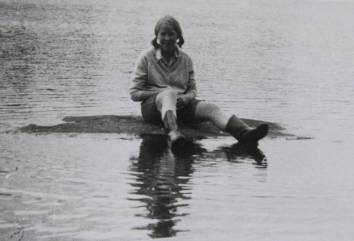
This is me in the summer 1969 when I was 16. I’m sitting on a rock in a lake in southern Norway on a family holiday. The picture characterizes me well: I would rather be outside anytime; I was a tomboy. I often say that I didn’t choose geology, it choose me. It suited me. I wasn’t conscious of that for many years because nobody in those days talked about those sort of things.
I’m from the Netherlands originally, a baby boomer. I grew up in the boring ’50s and ’60s (I was just too young for activist ’68 when it came along). Women were expected to be mothers. There was no discussion of careers or choices. Nowadays, women still experience those sorts of pressures although they are more subtle. We must learn to love ourselves for who we are and make choices regarding our future that suit our character.
2. The Netherlands: Undergraduate and MSc
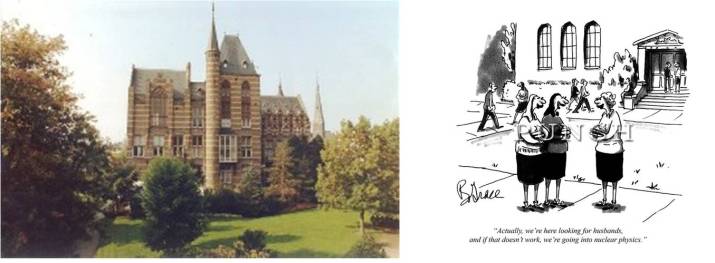
Left: the Geology department building of Groningen University (now a conference centre). Right: “Actually, we’re here looking for husbands, and if that doesn’t work, we’re getting into nuclear physics”
I did my undergraduate degree at Groningen University in the Netherlands. I started out in chemistry, but quickly migrated out. I then meant to major in biology, but ended up taking geology classes and loved the mapping part. It was eccentric, the department was housed in an iconic, beautiful building, there were hardly any students, I was the only girl.
I started university in 1971. Girls in the Netherlands of my generation and background (upper middle class) typically did not have “working mothers”. None of my friends’ mothers “worked outside the home”. Yes, we did have a few women teachers in high school. They were mostly women who worked “because they had to” (i.e. they had no bread-winning spouse). The exception was my chemistry teacher, who was young, straight out of university, just married and fantastic. She was both demanding and hilarious and incredibly interested in her students as individuals. In hindsight, she was my earliest role model. I reconnected with her 40 years after my high school graduation!
I had many women friends who studied law, medicine, economics, chemistry, biology, but I cannot recall we ever talked about careers those first four years. I think many of us subconsciously assumed that we would end up like our mothers. But all those women friends did really well career-wise, whether they became attached and mothers or not.
I am the only woman to have ever graduated with a BSc in Geology from Groningen University. A dubious honour. But I never thought along those terms in those years. All my male fellow geology students were great pals. They had completely different backgrounds from me: many of them came from small rural towns close to Groningen. Not only was I the only girl, I was the only one “from away”. These guys weren’t part of my close social circle. In hindsight, I probably missed out on a lot of geo-socializing and likely also career-talk because of that situation, but I never thought about it. I was never very “girly” and I’m also not the timid type – I speak my mind. It was a good atmosphere.
Fieldwork in the early ’70s.
Here is one of my long-haired fellow geology students. It was the ’70s, so all men looked scruffy. We went on many long field trips and I can’t remember how I negotiated the bathroom issue. More than 15 years later, when I began a teaching position at Utrecht university, the women geology students demanded that there would be two proper bathroom stops each day on each field trip. I was so impressed by this – completely reasonable! – demand. And I became acutely aware that I never asked for such a simple accommodation myself when I was a student. In my days, you simply adapted to the male world, you acted like a guy, because if you didn’t, you clearly couldn’t manage, you failed. Nobody thought that conditions should .change for women to enable them to fully participate.
I can’t recall finding the lack of bathroom stops a difficult challenge. Indeed, I did as the guys and when I had a period during long field days, I managed somehow – I can’t even remember how.
I was at a complete loss of how to proceed after my BSc. A year earlier I wanted to drop out and become a nurse. Fortunately my dad told me that was fine, but I had to finish my BSc first. Other than that, I experienced no career counseling. When I did get my degree (all in time and with good marks), becoming a nurse was no longer my ambition. I had decided to get my geography teaching certificate. So I ended up doing an MSc thesis on late glacial geomorphology of an enigmatic feature in the northern Netherlands, and – as a minor – I spent a semester learning about what is now called Geomatics and then I discovered Sedimentology, as a second minor (yes, it was a demanding program). Really, Sedimentology became my MSc more than the glacial thesis (which proceeded at glacial speed). I did get that teaching qualification. My parents approved.
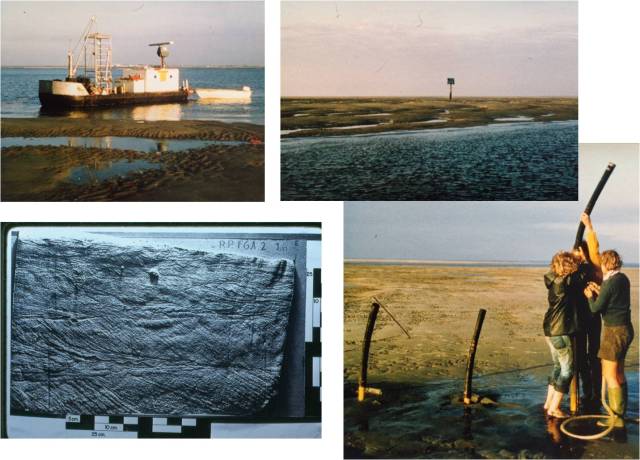
Sedimentology fieldwork in the Oosterschelde estuary, Netherlands. Top left, our Research Vessel. Top Right: our 2×2 m tarp-covered observation station, on top of a large pylon rammed into the tidal shoal (picture at low tide). Below right: using the 4 hour low-tide window to insert hoses and pumps, enabling us to lower the water table temporarily, so we could dig a trench and make a lacquer profile (below left). The lacquer profile shows reactivation surfaces of multiple high tide events – I used these photographs for sedimentology classes in later years.
For my Sedimentology fieldwork, we worked on a tidal flat in the southwestern Netherlands where the tide range is about 4 m max. We studied the dynamics of sedimentation on the tidal flat, measuring currents and sediment movement throughout one entire lunar cycle. It was real team work and…. there were other women students. It involved a lot of responsibility, it required handling all kinds of gear, including a pontoon-like research vessel, in all kinds of weather and the best part was that sometimes (if it was your shift), you got to spend a night on the 2 x 2 m tarp-covered platform on a post 4 m above the tidal flat. You’d have to get off the platform at low tide to check the instruments out on the tidal flat and you’d be all by yourself on a shoal in the middle of the estuary in the middle of the night. It was terrific. I was hooked – I wanted to study sediments. Not one person had talked to me about what jobs one could pursue with a geology degree, but it was easy to see that studying sedimentology had huge relevance for coastal management (recall: it’s the Netherlands, they are kind of obsessed with battling the sea). Years later, I read John McPhee’s terrific “Rising from the Plains”, which contains this quote: “Geologists tend to have been strongly influenced by the rocks among which they grew up……. The wizards of sedimentology tend to be Dutch, as one would expect…..”. I don’t know that I became a wizard, but sedimentology sure felt like coming home.
It looks like such an odd choice: two thesis subjects in the Netherlands! In that minuscule country! Here’s another thing I learned about myself: I’m a backyard earth scientist: I have an urgent desire to understand the geology of my home base. I could have picked thesis areas in Spain, Germany, even Canada, but I stuck close to base. My furthest fieldwork area was in Belgium, in the Hercynian Ardennes fold belt, where I also worked as a TA during my MSc.
A few months before graduating with my MSc, I attended a conference on Holocene sedimentation in the North Sea. My sedimentology advisor displayed our tidal research theses prominently. There were lots of international participants, among whom quite a few Americans and Canadians: I made connections and ended up as a PhD student at Louisiana State University’s geology department.
3. The Deep South: Louisiana
Really, I didn’t want to to a PhD, but I wanted to leave the Netherlands and I didn’t want to work for an oil company, which would have been a secure and obvious way of getting international postings. Why not? I can’t really remember. So when a prof from LSU invited me to apply to the PhD program and I realized that Baton Rouge was pretty much at the apex of the vast Mississippi Delta (sediments!), I decided to take the chance. As one of my woman-geologist friend said at the time: “these Dutch people, they can’t stay away from flat delta plains!”
I spent one year as a full-time PhD student and I struggled. I really didn’t want to be in school any longer. I felt incredibly lonely, and I hated being that poor. I considered going back home, but that would be giving up and what would I do there?
After my first year, I landed a summer job with the Louisiana Geological Survey (LGS). I worked on their Geopressured-Geothermal project, a post-oil crisis initiative funded by the US Department of Energy. As a result of the oil crisis of 1973, the world suddenly became aware of the risk of being dependent on oil imports from unfriendly or politically unstable countries. That awareness led to increased government-funded R&D into earlier untapped domestic reserves. Fossil fuel reserves, of course, nobody thought beyond those quite yet.
I loved the job and I didn’t want to go back to being a poor student. At the end of the summer, LGS hired me full time on this project. Less than half a year later, my director appointed me to lead their somewhat foundering “peat project”, also an outflow of the oil crisis (peat burns, in case you wonder). Well, he didn’t just appoint me. He suggested I take this responsibility, he thought I could do it. I was aghast. I had never been in the field in the delta on my own, I knew next to nothing about its modern sedimentology, I had never been a project leader, I was still very new to the country. I was petrified that I would fail. I asked my boss if I could think about it and then I accepted a day or two later.
Lesson for women: no guy would have questioned this obvious promotion the way I did. Not then, not today, 35 years later. Women tend to underestimate their own capabilities, men overestimate them. I know that’s a generalization, but nevertheless. This particular boss was a special human being, one who was a master at encouragement and letting people grow into their potential. I never had a superior like him again. He left LGS shortly afterwards.
The peat project was incredibly challenging. Fieldwork required roaring around the vast Mississippi Delta plain in steaming heat and humidity, having to watch out for alligators, snakes, mosquitoes the size of dragonflies and electrical storms, to name the most obvious. We took hundreds of up to 10 m long vibracores in what ended up being largely floating marshes and tried to make sense of meters and meters of black gooey muck. I had a lot of independence and a lot of responsibility. I talked to world-famous experts on Mississippi Delta sedimentation and found out they had never looked at the muck I was looking at. I took in their advice about how to tackle this material and slowly began to produce results.
Fieldwork in the Mississippi Delta.
Then came the baby.
I had met a man and fallen in love and gotten pregnant. I was nearly 30, it seemed the right time.
Lesson for women: carrying a baby is still only a woman’s privilege. And whereas times have changed, it’s the woman whose body will get whacked by pregnancy and who has to navigate (field) work around breastfeeding, work travel and other such issues. The mother’s career will likely suffer a greater punch than that of the non-childbearing spouse. And the mother’s career choices will subsequently be more influenced by the question of whether that next career step has any possibility of improving the balance between her, her work, and the the needs of the offspring.
The US is an uncivilized country in many aspects: paid maternity leave is a luxury for some. LGS offered none but my director was extremely helpful given the circumstances. I ended up with 8 weeks, half of which unpaid. Other than cuddling baby, I used my maternity leave to write a paper and lo and behold, it got a ‘best paper’ award! My career was launched.
The fact that our income was insecure and small was a career saver. Lesson for women: once you have a baby, you want to take care of it – your brain actually changes so that taking care of baby is the only thing you want to do (call it instinctive if you wish). But that means that going back to work a few weeks after giving birth is not easy. It feels wrong (guilt feelings!). But I had no choice, we needed the money badly. Had I had a husband with a fancy income, I would likely have caved – at least for quite a while – and just cuddled that little creature in her onesie.
But I went back to work, and was happy quite soon. When my daughter was a year old I realized that I should revive that PhD ambition because I was likely going to remain the bread winner. My “peat project” had become part of LGS’s Coastal Geology Program (turns out you can’t burn Louisiana peat, but it’s a very sensitive part of the Holocene stratigraphy; delta plain erosion and stability depends much on its properties), a program to find solutions for the rapidly disappearing Louisiana coastline and delta plain (I wrote about that subject here). We were now a team of seven young geoscientists and we all pursued our PhD as part of our job, encouraged by our employer.
So when the baby was a toddler, I became Dr. Kosters
Before moving on to the next phase, I need to emphasize one thing. We have just covered 15 years of study and work. I was in the field a lot during those years. Often, I was the only woman in a crew. I was never sexually harassed, bullied, made to feel inferior or jeered at by any of my male supervisors, colleagues or assistants. This study showed that, out of 666 respondents, only a shocking 25% was never harassed. With many more of these stories now coming to the surface, I feel it’s important to salute the men I was surrounded by for all those years. At the time I thought that was normal (as it should be).
Somewhere in these first few years in the US, I became a feminist. Indeed, it took that long and I have often wondered why because the second feminist wave was almost over by the time I became convinced. I’m pretty sure that I finally started thinking about women’s rights because one of my friends in Louisiana was an Equal Rights Amendment activist and those discussions brought me around.
4. The Deep South: Texas
Shortly after getting that much desired title, I started a job with the Texas Bureau of Economic Geology (= Geological Survey of Texas). “The Bureau” was and is a highly reputable organization, this was an upward move, although I was of course leaving my research behind. I did not mind that. I was ready for new explorations.
At BEG I worked on yet another post-oil crisis project: the “Atlas of Major Texas Gas Reservoirs” (they still sell it!), a data compilation and analysis of more than 4,000 individual gas reservoirs and their specific parameters. I became a walking encyclopedia about Gulf of Mexico gas reservoirs. I was unhappy at times about what seemed an endless tunnel of database building, but I did learn an immense amount about energy security and natural gas reserves.
Had my relationship not gone on the fritz, I would likely have wanted to stay at the Bureau for a long time. It was a well run ship with great job opportunities. I had terrific colleagues and Austin is a nice city on the edge of the beautiful Texas Hill Country.
But that wasn’t to be. I became singularly responsible for my daughter and was in much need of family support. I accepted an academic position at Utrecht University’s Department of Earth Sciences after only two years at BEG. The logistics of single parenthood would be much simpler in the Netherlands, and doesn’t everybody with a PhD want an Academic career? It was very hard to leave terrific colleagues and this reputable organization.
5. Back in the Netherlands: Utrecht University
On the personal side, this was a great move. I found a lovely townhouse across the street from a superb public elementary school. I found a terrific local babysitter. I had supportive family members close by and a lot of old friends. After a bit of a rough start, my daughter (then 5) started to thrive. That made it all worth it.
On the professional side, I found it difficult. The Dutch university system is very different from the North American one. Departments are organized into groups of different specialties (for earth science those may be structure/tectonics, sedimentology, stratigraphy/paleontology, geophysics, petrology, etc.). These groups are run hierarchically by the head of the group, the only person who is a full Professor. You may be an assistant of associate prof your entire career (you would be tenured). The only person entitled to graduate a PhD student is the full professor.
But I was hired in a hybrid position, the result of an effort to break down some of the existing silos between some of these specialized groups. Several profs had successfully argued for increasing the marine geoscience research effort. They were a geochemist, a micropaleontologist/paleoceanographer, and a geophysicist. They made the case for hiring a sedimentologist – me. That pretty much defined the context for my future research.
I got along well with them from the start. I dreamt up new projects, getting generous access to ships from the Netherlands Institute for Research of the Sea (NIOZ) and I went to work on existing data of my new colleagues.
Fieldwork with NIOZ’s amazing RV “Navicula” in the Dutch tidal sea at low tide. This flat-bottomed vessel draws 50 cm water and can be set on the tidal flats as a lab / workspace. It also had a fantastic crew of 3.
But as a faculty member I resorted within the Departmental Sedimentology Group where I taught sedimentology and stratigraphy classes. I really liked teaching and the interaction with the 18-24 age group. I put a lot of time and effort into developing new classes and labs. That’s typical for a new faculty member. I also reached out to Big Oil and managed to convince them to support some of my early research projects. Later, they funded a multi-university project (6 MSc theses) with me as the academic partner in the Carboniferous fluvio-deltaics of eastern Kentucky (a few weeks fieldwork in the US again).
Left: pondering tidal rhythmites in Carboniferous deltaic distributary mouth bars in eastern Kentucky. Right: fluvio-deltaic sedimentary sequences (including coal) in eastern Kentucky
But the then-head of that Departmental Sedimentology Group had his own ideas about how that group should profile itself and a “non-fundamental” sedimentologist (me!) wasn’t his preference for what he considered a stolen job opening (stolen by what he considered the “marine geoscience coup”). I wrote earlier about my thoughts and experience regarding women and fundamental research. He managed to find funding to hire a “fundamental” sedimentologist as a post-doc. The guy was excellent, a wonderful person, older than me, with more publications. He got the office next to me. Did this make me feel insecure? You bet. Did it create stress within the Sedimentology Group? You bet.
And whereas I did spend time in the field doing research, I did not join in teaching multi-week undergraduate field schools in Spain and Italy because it meant leaving my daughter alone for longer than I thought was good for her. While I had no problem making that decision as the best option for our little family, I didn’t think it helped me in improving my reputation within the department. In all honesty, I had no reason to be worried, because nobody ever suggested I wasn’t fulfilling my duties. In fact, two of my colleagues (all male, I was the only female faculty member) expressed explicit support for me in my specific situation. But I felt insecure nevertheless. Imposter syndrome was rearing its head, especially with my brilliant colleague in the office next door. Because I had always behaved as ‘one of the guys’, I had not allowed myself to become aware of the (subtle) differences that make Academic women feel less appreciated, such as in academic publishing.
When I look back at my academic production of those 4 years at Utrecht University now, I am impressed. I taught 5 different classes, started up new research, had 3 cooperative projects running with my marine geoscience colleagues and was coordinator for a European marine geoscience exchange program with 11 departments in 10 countries. I started to publish my new research.
But at the time I thought I was under-performing and more than anything I dreaded having to leave my daughter for 6 weeks for an ocean-going research expedition. In addition, I began to wonder whether I was fit for Academia. I wasn’t “fundamental” after all. And would I be able to keep up the drive to be “original” for another 25 years? In addition, being back in my home country fueled my interest in the political drivers of universities.
I started looking for other opportunities. By some weird fluke, a new opportunity presented itself soon, right around the time that I got tenured. I accepted tenure and resigned a week later. The fundamental post-doc next door ended up getting my position. I was happy for him (he had 3 kids to support!). He did well, he retired from that post last year. My colleagues were stunned by my departure and I felt forever sorry for those who had worked hard to recommend my tenure. But I knew that this move would be better for my/our personal situation and hoped it would eventually better for me professionally.
6. The Advisory Council for Education
I was almost 40 years old when I left my profession for a job as a policy advisor for Higher Education in a brand new government-funded think tank of the Ministry of Education. The pay was excellent, the hours predictable, the commute the same. This was a much more balanced life for my daughter and me.
The job was a crazy roller coaster. I felt like a complete novice when I entered the policy-advice arena. Nothing that I thought I knew or understood, applied here. I learned about policy and politics. I relearned to write in Dutch. I read and read and read and debated and debated and I learned tremendous amounts from my sparkling colleagues who had backgrounds in linguistics, anthropology, history, geography, physics, sociology and …. education. I built a completely new network.
The Government always wants to be an exemplary employer. I was offered a top notch women-only training and self-awareness program. About two dozen women were selected to participate. For the first time I learned about myself, how I functioned in organizations, what complementary talents other people had, how one should build a team with explicitly diverse talents. Until that time, I had only been judged on the basis of content (scientific production), never had I been asked to think about how I functioned within a group. I take that experience with me the rest of my life.
I call these 2.5 years my highly paid sabbatical. I’m pretty sure I didn’t say or write anything that improved Higher Education in the Netherlands, but I learned an immense amount and I can confidently say that I applied that later.
Shortly after I started this job, my director asked me what I hoped my next job would be. I thought that was an excellent question: do not assume your employees will hang around the rest of their career. As it was, he was also encouraging us to think about our future careers because he knew that the political future of this think tank was insecure. He was right, Parliament voted it out of existence within 3 years after its much publicized start.
But when he asked me that question, we didn’t know that yet. So I answered truthfully: that I’d ideally like to combine what I was going to learn at the Advisory Council with my international expertise as an earth scientist. He thought that made sense.
And I ended up being able to do that.
7. The International Institute for Geoinformation Science and Earth Observation / ITC
ITC was, from 1950-2010, an independent graduate school, focused on training young professionals from non-western countries in what we now call Geomatics and its applied fields (geology, hydrology, soil science, ecosystem management, agriculture). ITC was created by the Netherlands government in 1950 as a contribution to brand new UNESCO. The Dutch government provided fellowships to young professionals from relevant organizations in non-western countries to be trained with new technologies in aerospace surveying and applications. Dutch students could also take courses, as I did in the late ’70s as part of my MSc.
In the early ’90s ITC was being challenged as an independent institute. Dutch universities were internationalizing and wanted access to these fellowships so that they too could offer money to foreign students (not: young professionals – major difference). The political powers wanted ITC to – eventually – become part of the University system, but ITC itself felt that the time wasn’t right – yet. Its visionary director was convinced that the Institute should first get serious in research. Until the mid ’90s, it offered a 1-yr postgraduate diploma and a 2-year MSc degree. Because ITC wasn’t part of the university system, it couldn’t offer a PhD degree and wasn’t easily capable of developing PhD supervisory capability since many of its faculty didn’t have PhDs themselves.
By some weird coincidence I became aware that ITC’s director was looking for a qualified interim person to advise them how to move forward. I became that interim person and was seconded to ITC for 4 months at the end of which I presented them with advice, after which I was hired as their Dean of Research & Graduate Studies, a brand new position.
The job required a move, something my then nearly 12-year old did not take easily. It was very hard to have to move, but I had confidence that Enschede had more to offer for her as a soon-to-be teenager than the small town where we had just spent 6.5 years. It did, eventually, but this was a difficult time.
In cooperation with ITC’s science advisory committee, I developed a tailor-made PhD program that involved PhD candidates having a university-based advisor as well as an ITC-based advisor and it also included options for non-PhD faculty who wanted to move ahead. It was very challenging because – again – the institute didn’t have PhD granting status and not a big research tradition, Dutch universities weren’t used to cooperating with non-PhD granting institutes and some universities saw ITC as a threat. In addition, some of ITC’s faculty saw me as a threat, because I sat on a rather large pile of money and they were used to dispense that money amongst themselves without much interference from others.
This loss of purse-grabbing prompted one of them, a rather archaic man with a particularly large ego, to tell me “nobody likes you” (because, you see, a woman is supposed to be “nice”). Aha! Whereas I don’t think very well on my feet, I was able to calmly tell him that being nice wasn’t part of my job description. Lesson for women: don’t concern yourself with being “nice”! You’re hired to do a job – it’s not a popularity contest. That’s hard, most women have to unlearn being nice.
When I left 7 years later, ITC’s PhD program had the best time-to-degree rate in the Netherlands and it became part of the Dutch university system a few years later.
So I didn’t work as an earth scientist for what ended up being 10 years. But I was active and visible in the earth sciences. I attended conferences and published a few papers. I became president of the Royal Netherlands Earth Sciences Society KNGMG, I served on a government panel for the management of the tidal sea and on review panels of the Netherlands Science Foundation and of the EU. I wasn’t “just” a paper pusher.
I was also active in two professional women’s networks – an immensely rewarding experience and I can’t stress enough how important such a connection is. Real face-to-face networking is still of utmost importance. Of all my jobs, only the Advisory Council job came through an ad and I didn’t know a soul at that organization. Every other job or contract came through people I knew personally.
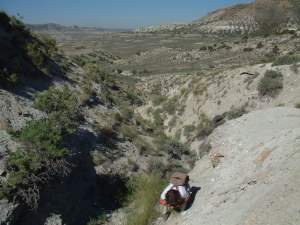 Green River Basin fieldtrip in the late ’90s
Green River Basin fieldtrip in the late ’90s
I also met my Canadian husband at ITC. After 7 years at ITC my daughter graduated from high school, my husband retired, I resigned and we all moved (back) to Canada. It was not an automatic choice. We thought about staying in the Netherlands, where I had twice been invited to apply for senior leadership positions in government / academic institutions. No doubt my career would have evolved in an exciting and professionally highly fulfilling direction if we had stayed. But I thought that it would be better for our new family to be in Canada. Did I make a typical woman’s choice? Maybe. But I haven’t regretted it despite the fact that this move professionally didn’t pan out as I hoped it might.
8. Across the ocean again: Nova Scotia
We arrived in Nova Scotia a few months before I turned 50. I took my first long “sabbatical”. It ended up being two years. We rebuilt a house, we found a new balance in our life, we built family relationships. My husband had a couple of challenging health issues and all this took time and energy.
Professionally, Canada was completely different from the US, where they simply throw you in the deep end and you’ll find out if you sink or swim. That can be exhilarating and scary and I had loved it early in my career. In Canada they are interested in whether you have “Canadian experience”. I didn’t have that and because I wasn’t a young starter, that was a big problem. But I did have professional contacts in Canada. I didn’t count on working as a geologist at all, but geologists were the people I knew and that’s how I ended up getting work.
I worked as an independent for 12 years. I taught sedimentology & stratigraphy at both Acadia and Dalhousie Universities. For five years I served as executive director of the Canadian Federation of Earth Sciences and in between I was involved in running field schools for young professionals in the petroleum industry. I served as president of the Atlantic Geoscience Society. I tried hard to get a foot in the door in the R&D around tidal energy development here in the Bay of Fundy and Minas Basin, but despite attending conferences and workshops and presenting papers, I got nowhere. To this day I don’t understand that.
Teaching sedimentology – ancient and modern – along the shores and on the tidal flats of Nova Scotia’s Minas Basin.
Maybe I should have been more aggressive about finding work, but I also cherished our new life. So at times I struggled a lot with my diminished professional life and – in extension – my diminished income and therefore independence. And at other times I was ok with it. My husband was supportive, he was completely prepared to move again if I had found a dream job that would require a move. But our happiness here was more important to me in the end.
9. Lessons for women
There are lots of lessons for women, some of which I already highlighted above.
My career changes were heavily influenced by the fact that I became a single parent. That is life. I don’t regret it. My daughter is a happy, successful professional with global work experience in an important field, working on her PhD. I’m immensely proud of her. If I sacrificed parts of my career for her, it was worth it. Read this article by a famous feminist on how other women of my age may look back at such choices.
I have been spared sexual harassment but not discrimination. Today there is much more transparency about pay scales. The media regularly publicize the shameful “gender pay gap”. That notion didn’t really exist until this century so while I always assumed that I was paid the same as my male colleagues (why wouldn’t I?), that may not have been the case at all and it certainly wasn’t the case at ITC (I wrote about that here).
I was never sexually harrassed, but I know that is exceptional. I am astounded at the amount of sexual harrassment that surfaces in recent years and I truly wonder if things have changed for the worse over the years or whether I was just lucky.
But while I was spared sexual harrassment, I wasn’t spared bullying. I was bullied by my director during my time at the Advisory Council for Education but that was eventually managed well because it was part of the national government and they had good HR policies and professionals. I was very rattled, but then ITC recruited me and things turned around. I was bullied by 1 of my directors at ITC (not the one who hired me), but his turned out to be a very short tenure so I lucked out there (two male colleagues resigned as a result of his bullying – it wasn’t because I was female). I was bullied to such an extent by one of the CFES presidents that I resigned from that position. By that time I was nearly 60 and I decided that life was too short to suffer from big male egos. I’m happy that those egos have disappeared from CFES and that it is doing well now. The problem was that it was such a small organization that there was no way to turn.
Role models are very important especially for women and they were few and far between for me. I wrote about two of my role models here and here. Earlier, my above mentioned high school chemistry was important to me. During my first real job in Louisiana, I was immensely encouraged (although I met her maybe only four times) by the legendary Doris Malkin Curtis.
So what are the lessons I’d like to pass on to women of the next generation? Be true to yourself, don’t be afraid to ask for help, don’t worry about being (too) nice, join a women’s network, know your rights, be suspicious of big egos and just Carry Yourself With The Confidence Of A Girl Holding A Massive Owl

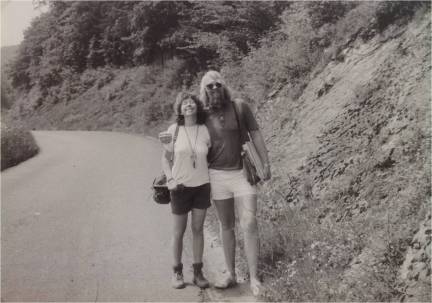
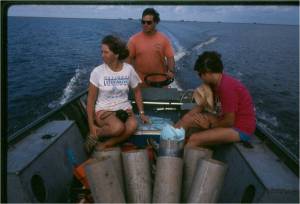


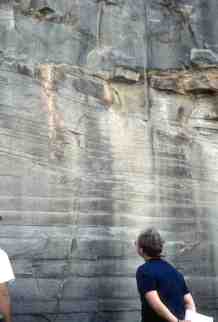
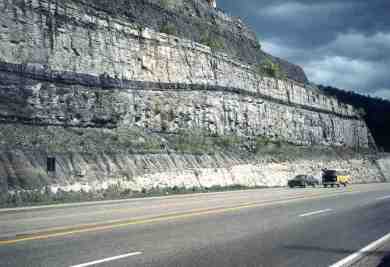

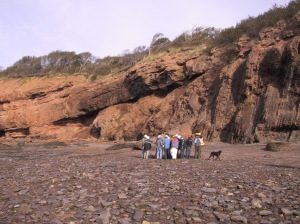
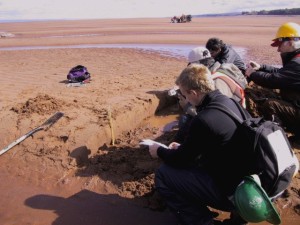

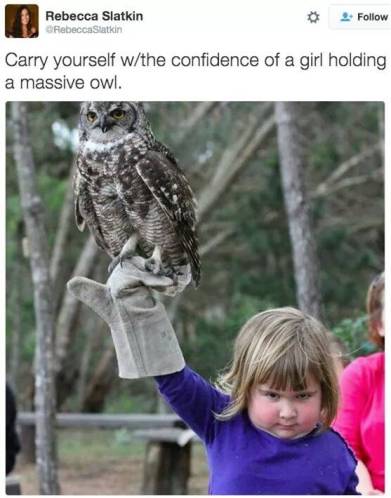

Hi, I would like this / your story to put in our upcoming “Xde Lustrum Boek” fot the year of 71 Utrecht G&G. I think it is a great read!
Alle nog levende studenten van toen (begonnen in het geologische instituut op de Oudegracht) schrijven hun ervaringen van de laatste 50 jaar. We maken dit een “gastbijdrage”.
Hopelijk vind je dit leuk.